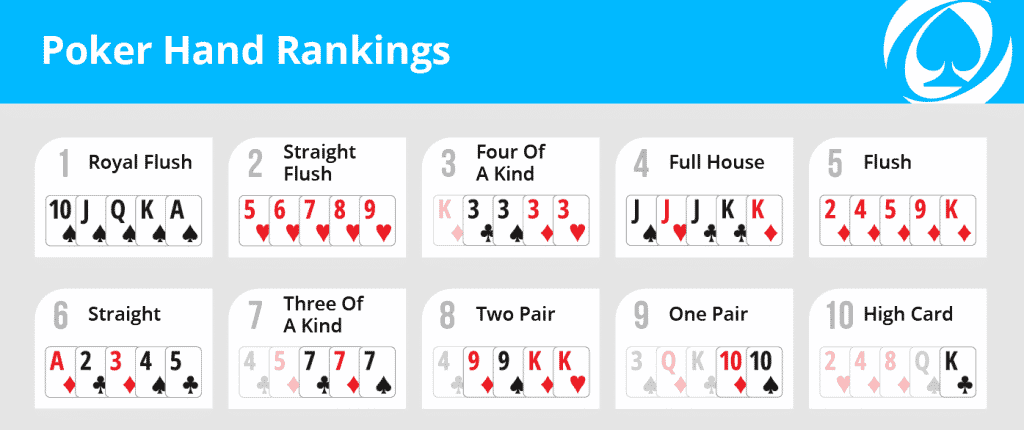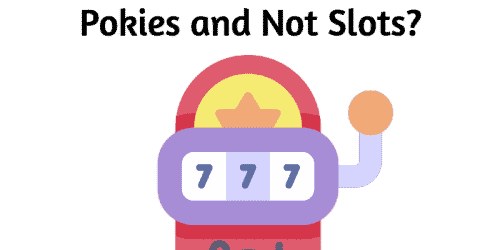How To Play Poker – Learn The Basic Rules

Poker isn’t an easy game of chance which is why we’ll go through all the basic rules of the game. Let’s get started with the basics of this card game:
- Gather 2-10 players and a pack of 52 cards.
- Decide the ante, betting limits, time limit, and poker variant (for this example we’ll use Texas hold’em).
- If playing a tournament game, distribute chips evenly. If playing a cash game, distribute chips based on buy-in.
- Decide on a dedicated or starting dealer.
- Start the pot with the ante or blind bets.
- The croupier will deal each player at the table two cards, face down. The dealer deals one card at a time, starting with the player sitting on their left side, continuing clockwise.
- Each player can call, raise, or fold. As for the blind bets, the pre-flop starts with the player seated to the left side of the big blind.
- Deal three cards face up to the community cards in the centre of the table.
- Each player needs to act. They have the same options as step #7 except now they can also check. Now it starts with the player on the dealer’s left.
- Deal one card to the community cards.
- All remaining players should act. They have all the same options as step #9.
- The 5th card is dealt (community card).
- All remaining players should act.
- All remaining players should reveal their two face-down cards.
- Determine the winning hand based on the player’s combination of their face-down cards and community cards.
- The player with the winning hand takes the pot.
- Shift the dealer role clockwise from the starting dealer.
- Collect all cards and shuffle them.
- Repeat, starting from step #5 until the time limit is reached.
Now, if you’ve never played poker before and don’t know the rules then the above may seem like a lot. Let’s move on to the basic rules of the poker game.
Table of Contents
Basic rules
There are plenty of poker variations. The most famous is called Texas hold’em. While the variations can be very different there are some basic rules they all start from.
Poker games can have limits or no limits. In a no-limit game, you can bet any amount of your chips any time you make a bet. The exception to this is if you are in one of the blind seats. In this case, the blind bets are set.
On the other hand, a game with a limit will have set caps on betting and raising. This can take the form of small bets and big bets. Often the small bet is the same as the big blind. Raise caps to limit the number of raises during a round.
As for dealing, usually, poker games use a dealer button system. When there isn’t a dedicated dealer, the dealer role rotates through the players as tracked by the dealer button.
The dealer deals with the cards during a game, decides rules (if a dealer’s choice game), and serves as the point of reference for various other roles.
Poker Hand Values
Arguably the most important characteristic of the poker game is a full understanding of the value of a poker hand. It will influence your betting actions and can win you the pot.
In most poker variations the player will have 5 cards in their hand. In these games, there are card combinations that are more valuable than others. A basic rule of thumb is the lower the odds for you to be dealt a particular hand, the more it’s worth.
Below are the possible hands from highest to lowest value.
- Five of a Kind. Since poker is normally played with only one deck this can only happen when there are wild cards.This hand can be made up of any number of wild cards and normal cards. E.g. J-J-J-J-W
- Royal Flush. This hand is made up of all three face cards, the ace, and the ten from the same suit. E.g. A-K-Q-J-10
- Straight Flush. Similar to a royal flush, this hand is made up of consecutive cards from the same suit. E.g. 3-4-5-6-7
- Four of a Kind. Four of the same number or face card. E.g. Q-Q-Q-Q-5
- Full House. Stands for three cards of the same rank with the last two being a pair of a different rank. E.g. 2-2-2-K-K
- Flush. Every card must be from the same suit but doesn’t have to be consecutive. E.g. 9-6-Q-2-4
- Straight. Each card in this hand is consecutive, but not from the same suit. The cards can be any combination of the four suits as long as they’re not all the same. E.g. 5-6-7-8-9
- Three of a Kind. Stands for three cards of the same rank. The other two cards don’t match like a full house. E.g. A-A-A-8-4
- Two Pair. Two pairs + an unmatched card. E.g. 9-9-4-4-2
- One Pair. One pair in this hand + 3 random cards. E.g. 3-3-K-6-8
- No Pair. None of the cards make a pair, are consecutive, or the same suit. In the event that every player at the table has a no pair combination, the highest card in the hand will win. E.g. J-6-2-4-8
It is possible to tie in poker if there are two identical hands. If this happens the usual protocol is to split the pot.
In the cases when two hands of the same type are revealed the winning hand is determined by the highest card in the hand. For example, a straight flush made up of a three through seven is beaten by a straight flush made up of a 5 through 10.
Bet Types Basics
There are two types of bets that get the game started. The first is the ante.
An ante is a general term for any bet placed before cards are dealt. The size of the ante is determined by the group you’re playing with. Every player must pay the ante.
Usually, the ante does not change during a game, but it can if the group decides to. Tournament games will often up the ante to keep the game within a time limit.
The other type of pre-deal bet is called a blind. There are two blinds, small and big. These are paid by the two players to the left of the dealer. The first player pays the small and the second pays the big which is often double the small blind.
As the dealer role moves around the table, so too does the burden of the blinds.
These two types can be used in the same game, but often are not.
Actions during betting rounds
Betting also occurs after cards have been dealt. The actions that deal with betting during the game include: bet, call, raise, fold, and check.
The bet action can be taken when there have been no other bets in the current round. Some games will have bet minimums.
Like the bet action, the check action is only available if no bets have been placed. So this can occur only after the round in which the blinds are paid. Checking means that you don’t place a bet.
Once a bet has been placed you have the option to call, raise, or fold. Calling means that you match the bet. Raising means that you meet and exceed the bet. Folding is when you don’t make a bet and discard your hand.
Any raises after an earlier raise are referred to as a re-raise.
References
- https://www.pokernews.com/poker-rules/
- https://upswingpoker.com/poker-rules/
- https://bicyclecards.com/how-to-play/basics-of-poker/






